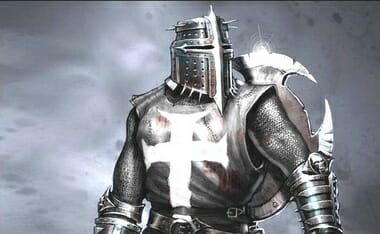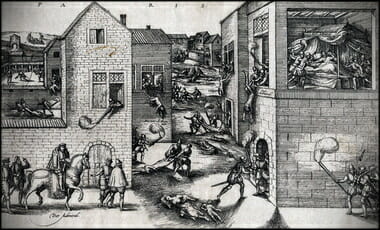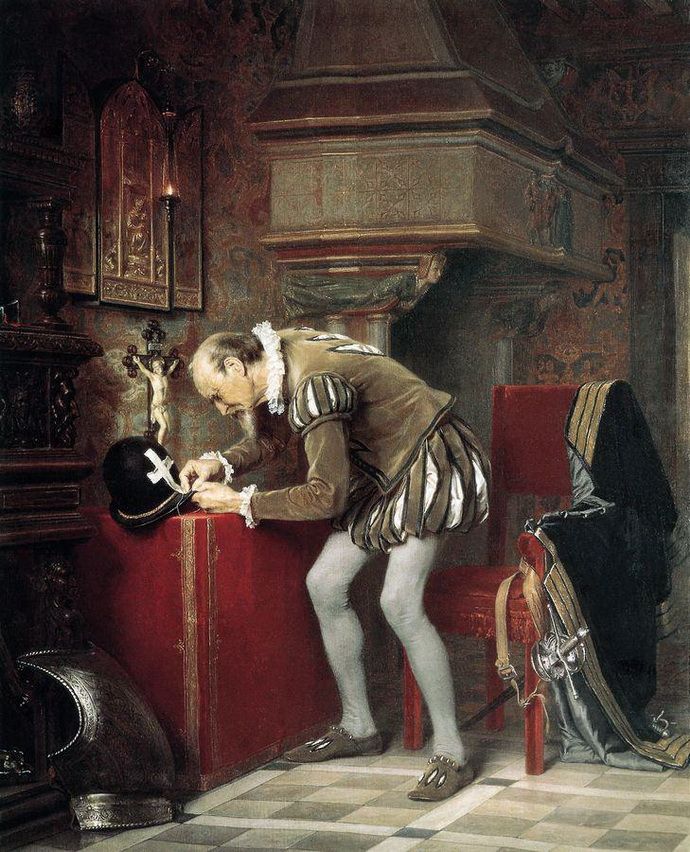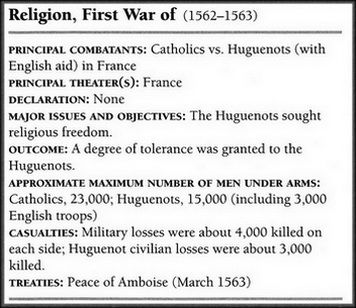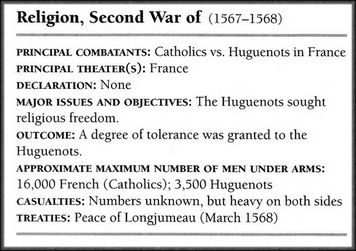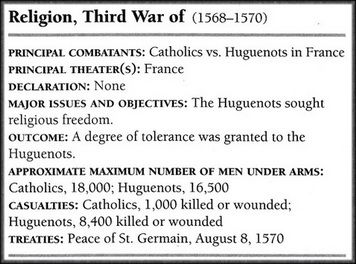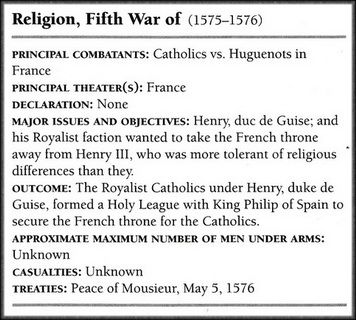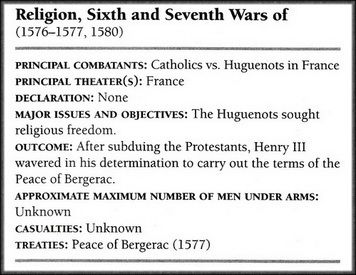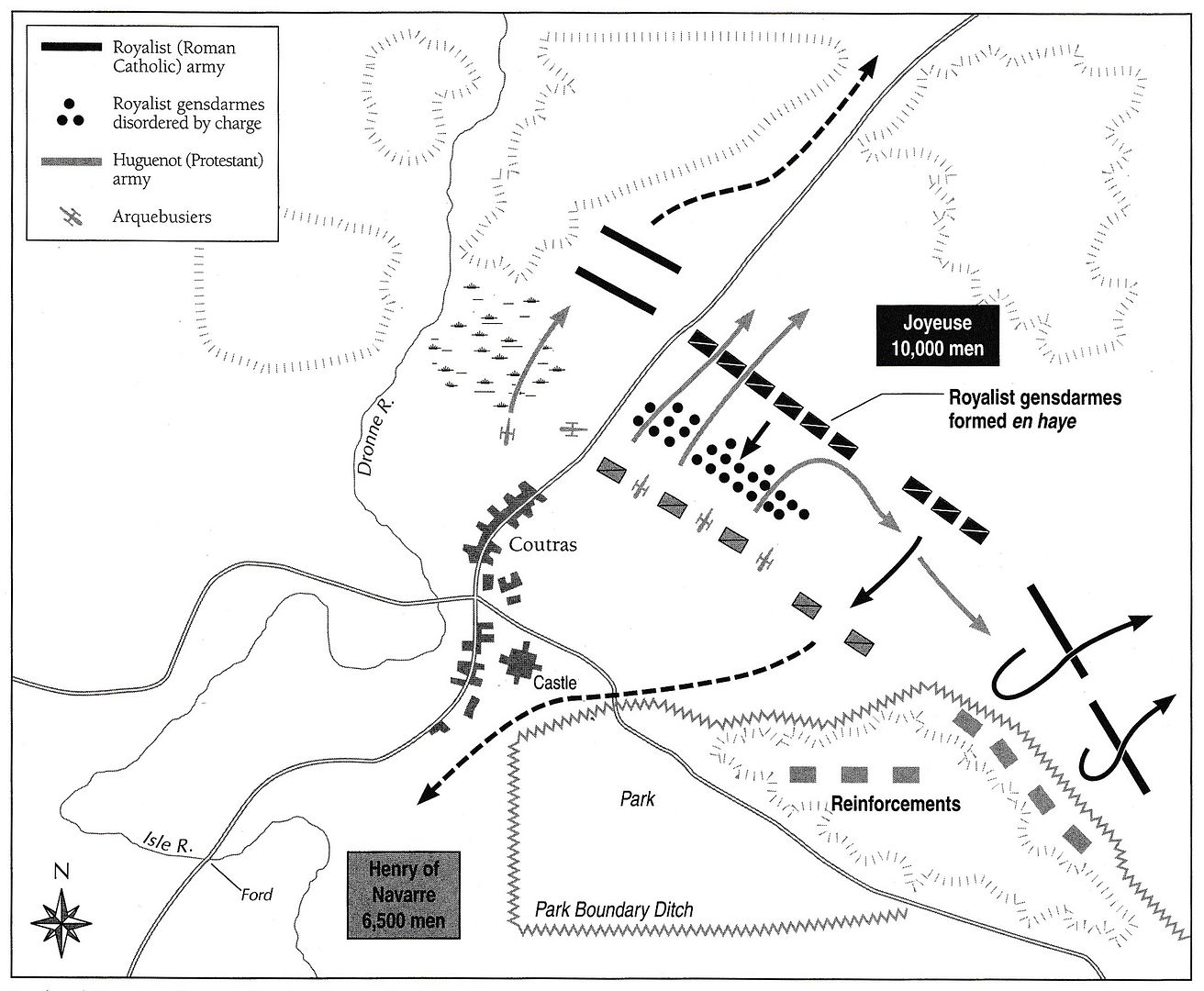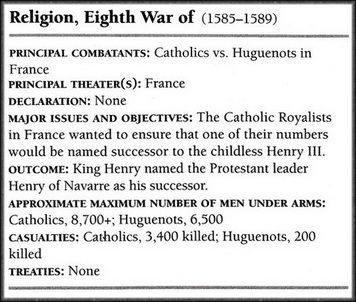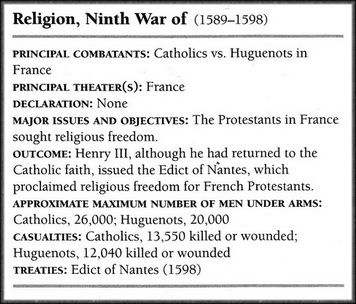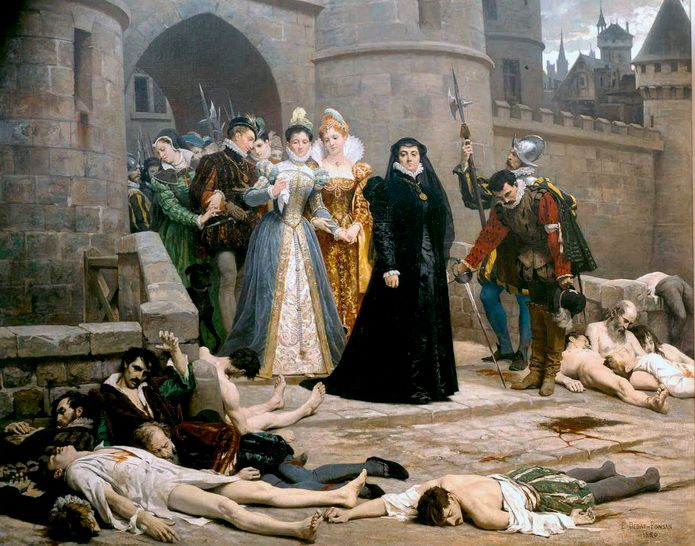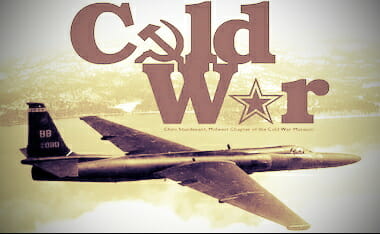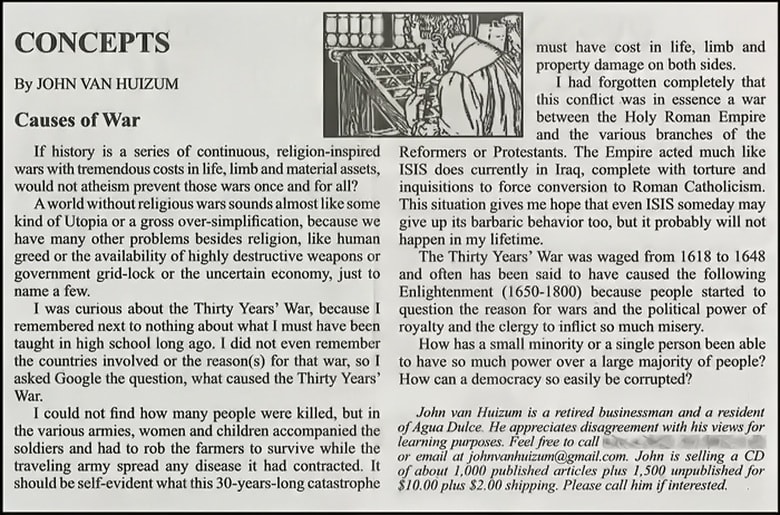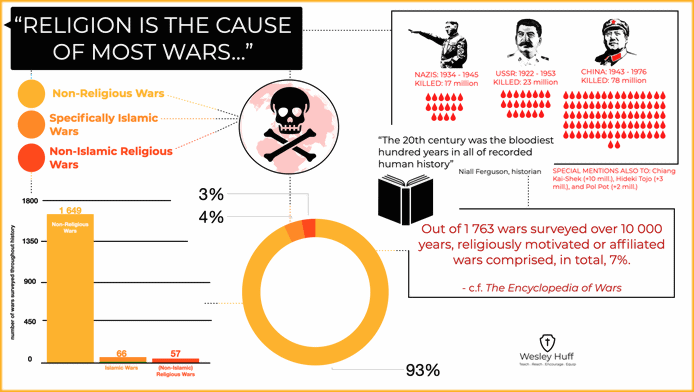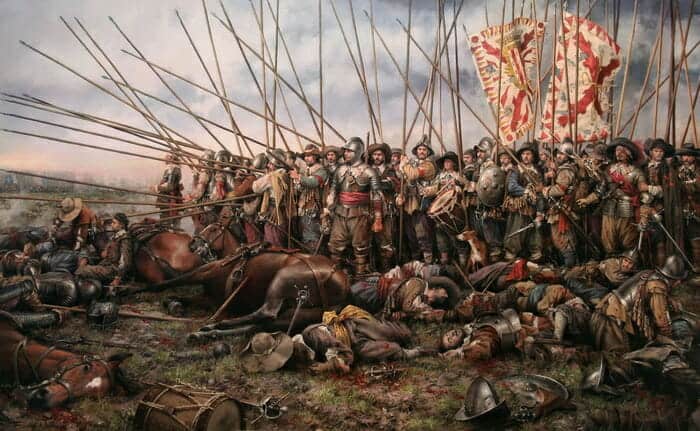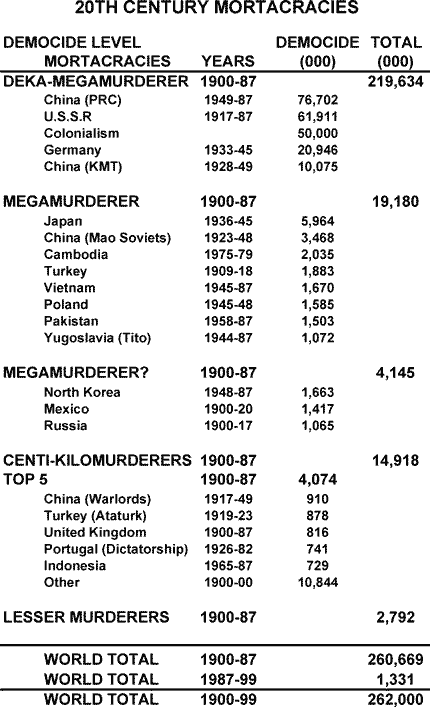- J. Daryl Charles, “Can a Pacifist Tell a Counterterrorism Strategy?” Philosophia Christi Vol 18 Num. 1 (Summer 2016), pp. 153-163.
[p.153>] …Full disclosure on my part is perhaps in order at this point. I grew up in an Anabaptist—and specifically Mennonite—tradition and thus understand and appreciate the pacifist mind-set from the inside. To its credit, the pacifist perspective is sensitive to the violent tendencies that permeate both human experience in general and American culture in particular. In addition, it recognizes diverse—and, in many ways, creative—avenues for social action. In the words of Jean Bethke Elshtain, pacifism puts “violence on trial” in that it views social life from the vantage-point of the potential victim and not the victor.14 Furthermore, it is keenly sensitive to the distortions of faith that come with an uncritical view of the state and fade into nationalism, a continual problem throughout history and not one that is uniquely American. Elsewhere I have critiqued the pacifism of Mennonite theologian John Howard Yoder,15 whose influence is enormous even outside of narrowly Anabaptist circles. Yoder’s work is worthy of serious critique, not least because of the thoroughness with which his theological justification of pacifism—errant and unrepresentative of the Christian moral tradition though it is—is built.16 [p.154>] In the end, the convictions represented in this response-essay represent not only my own position but classic “just war” thinking through the ages.17
The Ethico-Hermeneutical Fallacy
At the most basic level, given the natural moral law (as expressed, for example, in the Ten Commandments), it needs emphasis that there is no such thing as a “new morality” introduced in the New Covenant as most religious pacifists maintain. Jesus did not come to set aside the moral law but to affirm and clarify it (as Matthew 5:17ff. makes quite clear). Murder, adultery, dishonest speech, taking justice into one’s hands (that is, revenge or retaliation), and enemy-hatred,18 all of which are based on moral law revealed in the Old Testament, are not being set aside by Jesus; they are still prohibited.19 For this reason, Aquinas and the magisterial Protestant reformers distinguished between ceremonial, judicial, and moral law as they read and interpreted Old Testament law. Jesus, Paul, and James all agree: the New Covenant sums up-rather than changes-the ethical standard revealed in the Old?20 Thus, any hermeneutic that creates discontinuity of the moral law between the Old and New Testament is illegitimate and not representative of the historic Christian tradition.21 C. S. Lewis expresses it this way in his essay “On Ethics”:
The idea that Christianity brought an entirely new ethical code into the world is a grave error… for… its Founder, His precursor (the [p.155>] Baptist), [and] His apostles came demanding repentance and offering forgiveness, a demand and offer both meaningless except on the assumption of a moral law already known and broken.”22
It is no more possible, Lewis insists, “to invent a new ethic than to place a new sun in the sky.”23
The Textual and Contextual Fallacy
A second error plagues standard pacifist interpretations of Christian moral obligation. The image of “turning the other cheek” is meant to address issues of the heart—that is, personal reaction to abuse and insult, and personal revenge, not statecraft and public policy.24 This is made clear by the context of Matthew 5:39-42, in which “turning the other cheek” is one of four personal illustrations.25 The other three images are giving the shirt off your back, walking the second mile (likely a conscription to carry something, such as a soldier’s gear, a common Judean occurrence), and giving to anyone who asks. If “turning the other cheek” is universally binding, at any level, then giving the shirt off your back, walking a second mile when compelled, and giving to whoever asks—including every irresponsible child and every irresponsible person on the street corner—are as well.
In this light, the text of Romans 12:17-13:6, consisting of two complementary hortatory units needing to be taken together, offers a helpful parallel to Matthew 5, as Matthew Flannagan reminds the reader. Justice is proscribed in Romans 12 while it is prescribed in Romans 13. While I am free not to defend myself, I am not free not to defend the innocent third party who [156>] is suffering and needing protection.26 Pacifism is an option for individuals but not for communities, neighborhoods, or nations, wherein basic freedoms and rights need protecting, and often forcefully so. Since there will always be thieves, murderers, bandits, rapists, and wrongdoers, and since without the enforcement of law there will always be gangs of these wrongdoers, coercive power will always be a necessity in a relatively just and civil society.27 To not resist evil coercively is a moral absurdity, as Reinhold Niebuhr, Elizabeth Anscombe, and C. S. Lewis (among others) insist.28
The Politico-Cultural Fallacy
Given the pacifist tendency to speak in terms of “violence” or “nonviolence,” it needs to be emphasized that a qualitative moral distinction can be made—and should be maintained—between “violence” and “force.” It is for this reason that we conventionally speak of “military force,” not “military violence.” Analogically, it is the difference between romance and rape. Force may be defined as “the measure of power necessary and sufficient to uphold the valid purposes both of law and politics. What exceeds this measure is violence, which destroys the order both of law and politics.”29 Force, then, is morally neutral and can be used for either good or ill.
What needs reiterating in light of pacifism’s utopian tendency is that society without coercive power is impossible (not to mention fully unbiblical). Law and justice without force is a myth—try not paying your taxes! Justice without force is mythical because there will always exist evil men. And evil men must be hindered, in order that the very goods of human flourishing be [p.157>] protected; otherwise, human sinfulness would destroy everything. Peace at any price is not the Christian position. In the words of Aquinas, “peace is not a virtue, but the fruit of virtue.”30 That is to say, peace is a human good, but it is not an absolute good; peace must be justly ordered. After all, the Mafia, tyrants, terrorists, bandits, and pirates maintain a general orbit of “peace” in which they carry on their business. What then, we may ask, is “criminal justice”? And what happens to society without it? Here pacifism, with its fundamental commitment to “nonviolence,” is tragically irrelevant, despite its best intentions.
I happened to grow up in Pennsylvania, the “Quaker state.” Students of American history will recall that Quakers did have a go of it with their “holy experiment” of Quaker nonviolence. How long did the experiment last? Roughly seventy years (ca. 1680 to 1750). Well before the end, however, the high hopes for a “peaceable kingdom” were disintegrating. Forbidden to use violence, Quaker legislators hired others to fight the Indians, among others. In the end, it needs to be said, there is something very wrong with the religious attitude that basically says (or assumes), “Well, let the Gentiles—the unbelievers—do the messy business of maintaining justice in society.” Neither is this biblical, nor is it just, nor is it charitable.31 Someone must protect the neighborhood. Someone must protect the citizenry. Someone must protect society. Indeed, someone must perform those untidy public services that are often taken for granted, including guarding and transporting the life savings of pacifists from ABC Savings and Loan to XYZ Savings and Loan (as security guards routinely do).
To argue that Christians cannot serve in such positions or that political power (inclusive of “sword-bearing”) is inherently evil or that force cannot serve just purposes (as in fighting terrorism) is simply misguided at best and morally irresponsible at worst. Even the apostle Paul himself requested military protection when his own life was under threat (Acts 23). He does not take matters into his own hands, but asks the rightful authorities to do so—as, in fact, Romans 12 and 13 teach. What’s more, it finds no support from the Christian scriptures. Surely this is why neither Jesus nor John the Baptist nor the apostles ever call soldiers away from their vocation. According to Matthew 8:5-15, Jesus commends an officer in the Roman legions for a faith that is truly incomparable: “Assuredly I tell you, I’ve not found such great faith throughout all of Israel.” In a context of repentance, the Baptist exhorts soldiers to do two things: “Don’t intimidate anyone or accuse falsely, and be content with your wages” (Luke 3:14). Were the pacifist’s arguments [p.158>] valid, we would expect the Baptist to tell the soldiers, “Repent and leave your military service if you confess authentic faith, for the ‘kingdom of God’ is nigh; otherwise, you are practicing idolatry.” Alas, such a call is not forthcoming. And, shockingly, God uses an officer in the Roman legions as the primary vehicle by which to adjust Peter’s theological understanding of the New Covenant (Acts 10:1-11:18). What’s more, this army officer becomes the first Gentile convert to be baptized.
The Philosophical and Theological Fallacy
Yet another point of correction is in order. It concerns the widespread misunderstanding of what constitutes charity or neighbor-love. Charity can take various forms, including coercive force and retributive justice. Augustine and Aquinas are at pains to be clear about this. Augustine speaks of benigna asperitas—”benevolent harshness”—in a letter to his friend Mar-cellinus, a Roman official in Carthage, and insists that it is a loving thing to prevent a criminal from further victimizing the community; it is best for” he offender, for the community watching, and for future potential offenders.32 And in the Summa, Aquinas subsumes his discussion of justified war, interestingly, under the broader topic of caritas. In the just war tradition—and in the Christian moral tradition—charity and justice are wed; thus, to separate them or place them in opposition is to do irreparable harm to both virtues.33 Justice will always seek a humane, dignified, and morally appropriate way of manifesting itself, while charity will always seek to uphold what is true, right, and just. Neighbor-love and justice, when wed together, yield an ordered peace both at the international level and in domestic affairs (the latter being what we call “civil society”).
A principal error of pacifism, then, is that it mistakes the principles and forms of charity. Calculating consequences or effects of an action can never establish the rightness or wrongness thereof; rather, its intention and aim determine its moral quality, which in turn inform the means. At bottom, the “just war” criterion of right intention is a principal and necessary expression of “Golden Rule” ethics. Viewed positively, not only do we treat others as [p.159>] we wish to be treated ourselves, but in negative terms we do not treat others-nor do we permit others to be treated-as we ourselves would not wish to be treated. The implications for humanitarian intervention and for a morally relevant response to terrorism are obvious. In the context of catastrophic geopolitical events, charity will take the form of coming to the aid of the grossly oppressed, for which coercive force will be a moral necessity. For this reason, the West’s failure to prevent genocide in Bosnia, Rwanda, and Sudan in our time remains a scar on our collective conscience.34
It is unsurprising that among religious and secular pacifists alike, Gandhi is hailed universally as a model of “nonviolent” resistance. Yet one could well argue that Gandhi’s pacifism was easier in India, a British colony; it could not have existed in Nazi Germany or the Soviet Union. Precisely this doubt was lodged in the mind of George Orwell, who spent years as a journalist in India: “It is difficult to see how Gandhi’s methods could be applied in a country where opponents of the regime disappear in the middle of the night and are never heard from again.”35 What’s more, most people have either forgotten or are unaware of Gandhi’s advice to European Jews who were being delivered to death camps by the Nazis during WWII. And what was his advice? That they should commit suicide in order to get the world’s attention and speak forcefully to the conscience of nations.36 Consider the unspeakably tragic irony here in Gandhi’s thinking: violence (in fact, any coercive force) is morally prohibited against others, but lethal violence perpetrated against myself (if I am a Jew in a death camp) is permissible. This is neither just nor charitable.
The tragedy of pacifism as a policy, in the face of unspeakable horror, has been expressed by political theorist Michael Walzer in this way:
Nonviolent defense differs from conventional strategies in that it concedes the overrunning of the country that is being defended. It estab‑ [p.160>] lishes no obstacles capable of stopping a military advance or preventing a military occupation…. This is a radical concession, and I don’t think that any government has ever made it willingly.37
Walzer’s point is to take the “nonviolent” position consistently to its logical end, and his point is obvious. There are no cases in which civilian defense, based on “nonviolence,” has caused either an invader to withdraw, a potential invader not to invade, or a tyrant to cease and desist from terrorizing. Merely to say with the religious pacifist that as public policy we should follow the example of the “crucified Lamb” will not do. Not to resist is to condone the evildoing in the moral sphere of human relations. In the end, one can be assured that European Jews were grateful for Allied intervention near the end of World War II; for this reason, the truth of the ancient proverbial wisdom remains:
Rescue those who are being led away to death;
Hold back those staggering toward slaughter.
And if you say, “But we knew nothing about this,”
Does not he who weighs the heart perceive it?
Does not he who guards your life know it?
Will he not repay each person
According to what he has done?38
In the context of genocide and mass human rights violations, this rescue—this “holding back from slaughter”—will require coercive force and restraint, and such is the fruit of charity or neighbor-love—what one Christian ethicist called a “preferential ethics of protection.”39 Christian love, then, will always be in search of a responsible social policy.40 That is to say, it will always seek to incarnate itself; it will always take on flesh, in this way lending itself toward social policy. It will do so, however, without becoming a “Christian politics” or “Christian economics” per se, since idolatry by means of democracy or contractual agreement can become entrenched and institutionalized.
The Historical Fallacy
[p.161>] Finally, a major flaw in pacifist thinking needs revisiting. It is the remarkably widespread assumption—so widespread, in fact, that even many nonpacifists have imbibed it—that the early Church, until the fourth century, was uniformly pacifist. For example, in his influential Christian Attitudes toward War and Peace, the Quaker historian Roland Bainton asserted that “no Christian author to our knowledge approved of Christian participation in battle.”41 Virtually all pacifist writers make the same assertion, with not a few following John Howard Yoder’s line of reasoning, namely, that the early Christians rejected anything remotely related to the Empire and Caesar as “inherently evil,” including the military.
But this viewpoint is historically inaccurate and cannot hold up to scrutiny. Far from there being a univocal witness against soldiering and military service, the picture is one of ambiguity. There is little evidence of a unified and unambiguous “Christian” view of war and military service, or that most Christians opposed war or military service per se.42 And for the earliest generations of believers—until the mid-to-late second century—military service was a nonissue, since as a sociological group, Christians were insignificant, not wanted, and lacking the requisite Roman citizenship to join the Roman legions. This, however, would begin to change for purely demographic reasons in the second century.
More recent scholarship has tended to confirm that the early church was indeed not univocally pacifist, and that diversity rather than uniformity—as we might expect—characterized Christian attitudes toward war, soldiering, and military service. A bit of recent history at this point is in order. Up until roughly 1980, it was broadly assumed that the early Christians were “paci‑ [p.162>] fist,” based on a supposed aversion to bloodshed. By the late second century it was acknowledged that some Christians were serving in the military-a number that grew during the third century. It was further assumed that by the end of the fourth century a “Christian accommodation” to political changes was being mirrored-what some have called a “Constantinian fall” from the Church’s pristine purity (so Roland Bainton, John Cadoux, Jean Michel Hornus, John Howard Yoder, among others). Historical research done by people such as John Helgeland, James Turner Johnson, and Louis J. Swift in the late 1970s and early 1980s questioned the more or less uncritical acceptance of the pacifist interpretation of the early fathers.
Summarizing aspects of the emergent new consensus in his 1982 essay “Pacifism and Military Service in the Early Church,” K. W. Ruyter notes that while the very early fathers tended to borrow the eschatological imagery of the Old Testament prophets as they envisioned future peace, successive generations wrestled more and more with how to relate Christian faith to the present social order. In the end, Ruyter too rejects the portrait of a “purely pacifist” early Church: “On the basis of the sources, the picture seems to be more complex and pluriform.”43 Writing on the state of the question in 1989, David G. Hunter sought to add perspective to the emergence of “new consensus.” Hunter observed that “the former ‘pacifist consensus’ has been definitively revised in the light of contemporary discussion.”44 Among the findings of the “new consensus,” according to Hunter, were the following: (a) opponents of military service objected on the basis of a variety of factors, not merely bloodshed; (b) evidence from the late second century onward indicated divergence of opinion among Christians; (c) even among some pre-Constantinian fathers we see evidence of concern for a “just” case in going to war. Elsewhere Hunter has argued that “the pluralism of Christian witness today has a ground in the pluralism of the early church. From the very time when military service became a real option for Christians, there is evidence that Christians responded to it in a variety of ways. . . . The witness of the first three centuries does not provide the Christian today with a univocal mandate for pacifism.”45
What is striking about patristic writings of the early centuries is how infrequently the subject of Christians, war, and soldiering occurs. This is significant, for if it were the source of controversy, we would expect heated exchanges, conciliar declarations, and excommunications. Alas, these never materialize. Elsewhere I have weighed the patristic evidence and, with re‑ [p.163>] cent scholarship, have concluded that Helgeland, Johnson, Swift, Hunter, and Ruyter—and more recently, John Shean and Despina Iosif—are correct. There is indeed a scholarly consensus—and an ecumenical one at that—but it is not the consensus that pacifists would wish to salvage.46
Scholarly and theological integrity demand an accurate accounting of the complexity and diversity of pre-Constantinian Christian attitudes toward the military. It is surely worth noting that dissenting attitudes toward Christian enlistment in the Roman army during this period are individual and not collective or ecclesial. No controversy on the matter involving the entire Church or even between churches erupted. And we are justified in asking whether those individuals who did dissent were in fact representative of the Church at large.47….
Footnotes
14. Elshtain, Women and War, rev. ed. (Chicago: University of Chicago Press, 1995), 123, 132.
15. See David D. Corey and J. Daryl Charles, The Just War Tradition: An Introduction (Wilmington, DE: ISI Books, 2012), chap. 11 (“Why Have Our Churches Lost the Tradition? Two Temptations: Christian Realism, Christian Pacifism”), and J. Daryl Charles, Between Pacifism and Jihad: Just War and Christian Tradition (Downers Grove, IL: InterVarsity, 2005), 88106, esp. 88-93. Yoder is well known inter alia for suggesting the diversities of pacifism—see, e.g., his Nevertheless: The Varieties and Shortcomings of Religious Pacm, rev. ed. (Scottdale, PA: Herald Press, 1992), wherein he posits nearly twenty different pacifist varieties (flavors?). If it is consistent ideologically, however, pacifism rejects the possibility that coercive force can ever be used for just purposes.
16. In some respects this thoroughness—as well as moral seriousness—is absent from the work of Stanley Hauerwas, whose debt to Yoder is considerable. In addition to Yoder, another influential contemporary pacifist voice has been New Testament scholar Richard Hays, whose book The Moral Vision of the New Testament (San Francisco: HarperCollins, 1996) received effusive praise from the moment that it appeared in 1996. In his important 2013 volume In Defence of War (New York: Oxford University Press, 2013), British theologian Nigel Biggar has subjected Hays’s work—and specifically chap. 14 (“Violence in Defense of Justice”) of The Moral Vision—to withering (and much needed) criticism.
17. The “just war” concept should not be viewed as a theoretical justification for going to war but rather as an ethic of restraint by which we severely qualify whether or not to enter conflict and how to limit and guide the conduct of such undertakings. It affirms not what may be done but what should be done.
18. The command to love one’s enemies is already present in the Old Testament (Exod. 23:4-5 and Prov. 25:21). Affirmed by Paul (Rom. 12:20), it is not at odds with Israel’s civic laws that include punishments. Carrying out punishments under the Mosaic Law, according to the lex talionis, is not opposed to loving one’s personal enemies or the “law of Christ.”
19. What is being set aside are rabbinic re-interpretations of the law (i.e., the so-called “fence around the law”) that have distorted its meaning—hence, the repeated use by Jesus of the rabbinic kelal (“You have heard it said but 1 tell you . . .”) in the six case-illustrations used by our Lord (Matt. 5:21-48). See in this regard to J. Daryl Charles, “‘Do Not Suppose That I Have Come’: The Ethic of the Sermon on the Mount Reconsidered,” Southwestern Journal of Theology 46, no. 3 (2004): 47-70.
20. The radical ethical discontinuity presumed by religious pacifists has the effect of creating two Gods, not entirely unlike the heretic Marcion, for whom the ethical codes of the Old and New Testaments were discontinuous.
21. Those who object to God’s “warrior” character in the Old Testament (e.g., Ps. 18:34; 24:8; Jer. 20:11; Zeph. 3:17) typically argue that the New Testament reveals a God of love and peace, replacing a more “primitive” view of the Almighty. From the standpoint of orthodox Christian theism, such a view—”God the Warrior” vs. “God the Pacifist”—is untenable. Inter alia it ignores the mercy and Iovingkindness of God as pronounced in the Old Testament (e.g., Exod. 20:6; 34:6; Num. 14:18; Ps. 136; Isa. 55:3; Hos. 2:19; Mic. 7:18). Here I am presupposing the unity of the two Testaments as well as the unchanging nature of the divine character.
22. C. S. Lewis, “On Ethics,” in Christian Reflections, ed. Walter Hooper (Grand Rapids, MI: Eerdmans, 1967), 46.
23. Ibid., 53.
24. In this vein, the difference between retribution and revenge or retaliation needs underscoring. At its base moral outrage expressed through retributive justice is first and foremost anchored in moral principle, not mere emotional outrage or hatred. Retribution properly understood is concerned with the welfare of the population as well as those doing wrong. Any parent intuits the truth of this reality. Indeed, not to act against the will of an evildoer is to hurt both the community and the offender himself. Whereas revenge strikes out at real or perceived injury, retribution speaks to an objective wrong. Whereas revenge is wild, insatiable, and not subject to limitations, retribution has both upper and lower limits, acknowledging the moral repugnance both of draconian punishment for petty offenses and of light punishment for heinous crimes. Vengeance, by its nature, has a thirst for injury and delights in bringing further evil upon the other party. The avenger will not only kill but torture, rape, plunder, and burn what is left, deriving satisfaction from his victim’s direct or indirect suffering. In addition, because of its retaliatory mode, revenge will target both the offending party and those perceived to be akin. Retribution, by contrast, is targeted yet impersonal and impartial, not subject to personal bias. For this reason, Lady Justice is depicted as blindfolded. The difference between revenge and retribution is the difference between Rom. 12 and Rom. 13.
25. It is therefore wrong to view these four images as commands, which would render them moral absolutes.
26. Notice that Jesus did not say, “Turn the other cheek of the third party being accosted.” Theologian Donald Bloesch has rightly observed that pacifism mistakenly substitutes the principle of nonviolence for divine commandment (Freedom for Obedience: Evangelical Ethics for Contemporary Times (San Francisco: Harper and Row, 1987), 293-4).
27. It is not the prerogative of the state to forgive evil. South African Justice Richard Goldstone, who served as Chief Prosecutor of the International Criminal Tribunals for the former Yugoslavia and Rwanda, had this to say in a speech at the United States Holocaust Museum regarding evil from the recent past: “where there have been egregious human rights violations that have been unaccounted for, were there has been no justice, where the victims have not received any acknowledgement, where they have been forgotten, where there’s been a national amnesia, the effect is a cancer in the society.” See “War Crimes: When Amnesia Causes Cancer,” The Washington Post, February 2, 1997, C4. Goldstone’s comments serve to remind us that bad theology is a cruel taskmaster and makes for horrendous social policy.
28. For this reason, Niebuhr lampoons Protestant naiveté on the eve of World War II with sarcastic lament, suggesting that if only Christians had demonstrated more “nonviolent love” and “if Britain had only been fortunate enough to have produced 30 percent instead of two percent conscientious objectors to military service, [then] Hitler’s heart would have been softened and he would not have dared attack Poland” (Christianity and Power Politics (New York: Scribner’s, 1940), 6).
29. John Courtney Murray, We Hold These Truths: Catholic Reflections on the American Proposition (New York: Sheed and Ward, 1960), 288.
30. Aquinas, Summa Theologiae IIaIIae q.29.
31. This moral logic applies not only to the military or to police work and law enforcement; it applies to the myriad of vocations associated with civil and public service, including government work (of any type), holding public office, policy analysis, data collection, economics, security, lawyering, as well as any public service dedicated to promoting or protecting the common good.
32. Augustine, epistle 138 (“To Marcellinus”). We may properly define charity as desiring the best—the highest—for the other.
33. Elsewhere I have attempted to address the tragic divorce of justice and charity in general ethical terms in “Toward Restoring a Good Marriage: Reflections on the Contemporary Divorce of Love and Justice and Its Cultural Implications,” Journal of Church and State 55 (2013): 367-83. Insofar as the unity of charity and justice underpins the just war tradition classically understood, see J. Daryl Charles, “Justice, Neighbor-Love and the Just-War Tradition,” Cultural Encounters 1 (2004): 47-67; “Between Pacifism and Crusade: Justice and Neighbor-Love in the Just-War Tradition,” Logos: A Journal of Catholic Thought and Culture 8, no. 4 (2005): 86-123; and more recently, “The Moral Underpinnings of Just Retribution: Justice and Charity in Symbiosis,” Providence: A Journal of Christianity and American Foreign Policy (forthcoming).
34. These geopolitical tragedies illustrate why “peace” must be qualified and justly ordered. Correlatively, they expose the baseline fallacy of ideological pacifism, which proceeds from a presumption against coercive force and war rather than a presumption against evil and injustice. Hereon see J. Daryl Charles, “Presumption against War or Presumption against Injustice? The Just War Tradition Reconsidered,” Journal of Church and State 47 (2005): 335-69.
35. Sonia Orwell and Ian Angus, eds., The Collected Essays, Journalism and Letters of George Orwell, 4 vols. (New York: Harcourt Brace Janovich, 1968), 4:469; see as well George Orwell, “Reflections on Gandhi,” Partisan Review 16 (1949): 85-92. Gandhi’s method indeed would appear powerless and inefficacious against tyranny as we’ve known it in the twentieth century. Consider, for example, estimates of the numbers of death in the twentieth century due to conventional war—ca. 30 million—and to political tyranny and totalitarianism—between 100 and 200 million. The combined estimate given by French historian Stephane Courtois, in the introduction of The Black Book of Communism, trans. J. Murphy and M. Kramer (Cambridge, MA: Harvard University Press, 1999), is approximately 100 million. The estimate of military historian Robert Conquest, in Reflections on a Ravaged Century (New York: W. W. Norton, 2001), is in the 170 million range. Truly, the stench of death is stunning.
36. Gandhi’s thinking would appear to be rooted in the principle of satyagraha, by which it is presumed that the sight of suffering would move an aggressor to desist from his violence.
37. Michael Walzer, Just and Unjust Wars: A Moral Argument with Historical Illustrations, 4th ed. (New York: Basic Books, 2006), 329-30. In the end, a very troubling question for C. S. Lewis was why pacifists were tolerated only in liberal societies. This seemed to suggest a moral incongruity, since for pacifism to be a universal moral obligation it must be prescribed for all or for none. “This, then, is why I am not a Pacifist,” concluded C. S. Lewis. “If I tried to become one, I should find a very doubtful factual basis, an obscure train of reasoning, a weight of authority both human and Divine against me, and strong grounds for suspecting that my [personal] wishes had directed my decision” (“Why I Am Not a Pacifist,” in The Weight of Glory and Other Addresses, rev. ed. (New York: Macmillan, 1965), 53).
38. Prov. 24:11-12.
39. Paul Ramsey, Basic Christian Ethics (Louisville: Westminster John Knox, 1993), 166-70.
40. Ibid., 326-66 (chap. 9, “Christian Love in Search of a Social Policy”).
41. Roland Bainton, Christian Attitudes toward War and Peace (Nashville: Abingdon, 1960), 66.
42. Tertullian and Origen are typically cited as evidence of “normative pacifism” in the early church. But the earlier Tertullian, in Apology, speaks of the necessity of war in the service of protecting geographical borders, while observing that Christians help the emperor and the army through prayer. The later Tertullian, as represented in his two works On Idolatry and On the Military Crown, is worried about idolatry—idolatry in wider culture and idolatry in certain military practices and ceremonies. For his part, Origen writes in Contra Celsum—an apologetic work intended to argue that Christians were not unpatriotic—that Christians indeed served society by praying for the emperor and the soldiers to triumph in battle (8.73). Origen’s position was not one of pure pacifism, for although he was opposed to believers serving in the military, he did not oppose war. Clement of Alexandria, one of the earliest fathers to discuss war (late-second and early-third century), mirrors a positive attitude toward soldiering, anchoring this perspective in Jesus’s and John the Baptist’s dealings with soldiers. In his Exhortation to the Greeks, Clement observes that farmers, sailors and soldiers all are able to mature in their relationship with God (10.100.2). In the end, patristic evidence indicates that Tertullian, in his radical sectarianism, and Origen, in his selective pacifism, were not representative of the first four centuries. Moreover, it is well possible that the attitudes of both were due to an increasing number of Christians entering the military.
43. K. W. Ruyter, “Pacifism and Military Service in the Early Church,” Cross Currents 32 (1982): 54-70.
44. David G. Hunter, “A Decade of Research on Early Christians and Military Service,” Religious Studies Review 18, no. 2 (1989): 93 (emphasis added).
45. David G. Hunter, “The Christian Church and the Roman Army in the First Three Centuries,” in The Church’s Peace Witness, ed. Martin E. Miller and Barbara N. Gingerich (Grand Rapids, MI: Eerdmans, 1994), 180.
46. See J. Daryl Charles, “Patriots, Pacifists, or Both? Second Thoughts on Pre-Constantinian Early Christian Attitudes toward Soldiering and War,” Logos: A Journal of Catholic Thought and Culture 13, no. 2 (2010): 17-55; “Early Christian Attitudes toward Soldiering and War,” in The Just War Tradition, 23-51 (chap. 2); John Helgeland, “Christians and the Roman Army, A.D. 173-337,” Church History 43 (1974): 149-63, 200; “Christians and the Roman Army from Marcus Aurelius to Constantine,” Aufstieg and Niedergang der römischen Welt 2.23.1 (1979): 724-834; cf. as John Helgeland, Robert J. Daly, and J. Patout Burns, Christians in the Military: The Early Experience (Minneapolis: Fortress, 1985); James Turner Johnson, The Quest for Peace: Three Moral Traditions in Western Cultural History (Princeton: Princeton University Press, 1987), 3-66; Louis J. Swift, The Early Fathers on War and Military Service (Wilmington, DE: Michael Glazier, 1983); Hunter, “A Decade of Research on Early Christians and Military Service,” and “The Christian Church and the Roman Army in the First Three Centuries”; Ruyter, “Pacifism and Military Service in the Early Church”; John F. Shean, Soldiering for God: Christianity and the Roman Army (Leiden: Brill, 2010); and Despina Iosif, Early Christian Attitudes to War, Violence and Military Service (Piscataway: Gorgias Press, 2013).
That the ethical ramifications of contemporary accounts of the early centuries are indeed intended to be prescriptive and not merely descriptive should give us pause. Insofar as pacifism, by virtue of its refusal to participate in politics, cannot treat either criminal justice or international affairs seriously qua politics, it misconstrues—and severely limits—not only the church’s wider cultural mandate but also the manifold expressions of charity toward the oppressed that are affirmed by mainstream Christian thinking. By following pacifists’ prescription, we in truth make everyone unsafe.
47. More recently I have responded to pacifist claims regarding patristic evidence made by Ronald J. Sider in his essay “The Early Church on War and Killing,” Books & Culture, January-February 2016. In his review of recent scholarship that challenges the pacifist consensus and seems to confirm an emergent “new consensus,” Sider rather remarkably dismisses this historical (and countervailing) data as “speculation.” While Sider is surely free to disagree, he is not free to dismiss a different interpretation of historical data as mere “speculation.” See J. Daryl Charles, “‘The Early Church on War and Killing’ (Books & Culture, January-February 2016: A Response,” Providence: A Journal of Christianity and American Foreign Policy, January 29, 2016,

